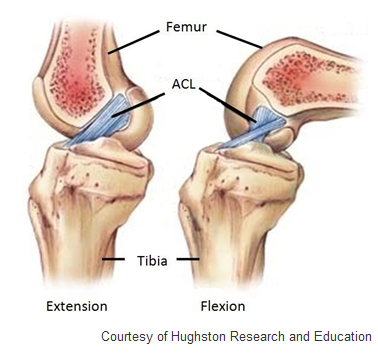Sports and automobile accidents are significant causes of ligament injury, and injury to the anterior cruciate ligament (ACL) is the most common ligament injury [1]. Of the many ligaments holding the human knee joint together, the ACL is of special importance because it maintains knee stability and helps to prevent damage to the knee by limiting joint motion.[2]
The ACL is composed mostly of densely packed collagen fibers that connect the femur and tibia.[6] The ACL lies inside the knee joint.
Because of large deformations and rotations, the ACL exhibits highly nonlinear and anisotropic behavior, and shows a clear strain rate dependency.[1] The anisotropic behavior is caused by collagen fiber families arranged in a matrix of soft material.
Ligaments are viscoelastic and therefore display time-dependent and load-history-dependent mechanical behavior.[2] The viscoelastic behaviors for ligaments have clinical significance as they help to prevent fatigue failure of the ligaments.
The problem presented here uses an anisotropic hyperelastic material model with viscoelasticity to model the anisotropy, nonlinear behavior, large strains, high compliance for bending loading and incompressibility. The exponential strain energy potential is used for anisotropic hyperelasticity with a Prony series viscoelastic model.



